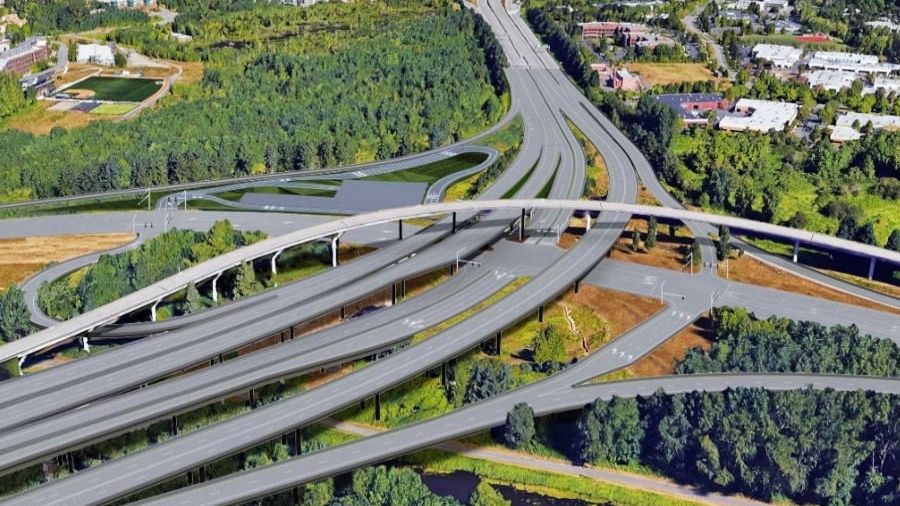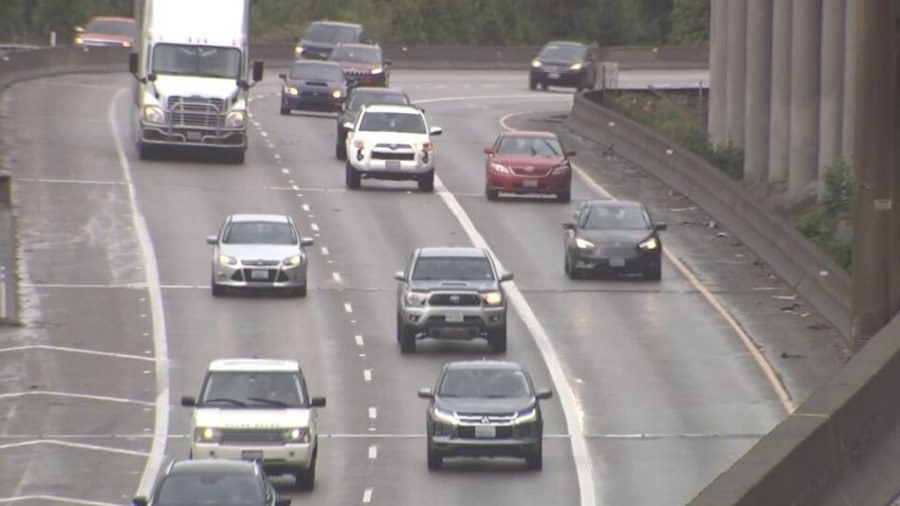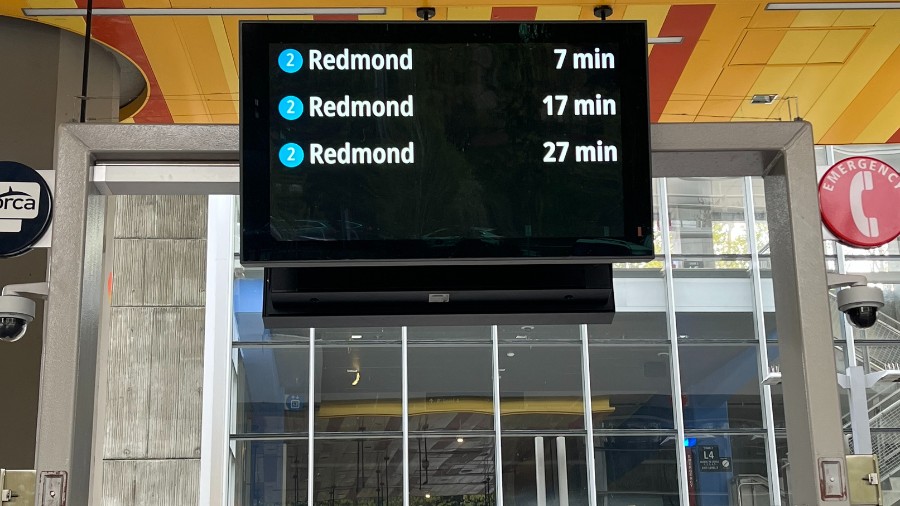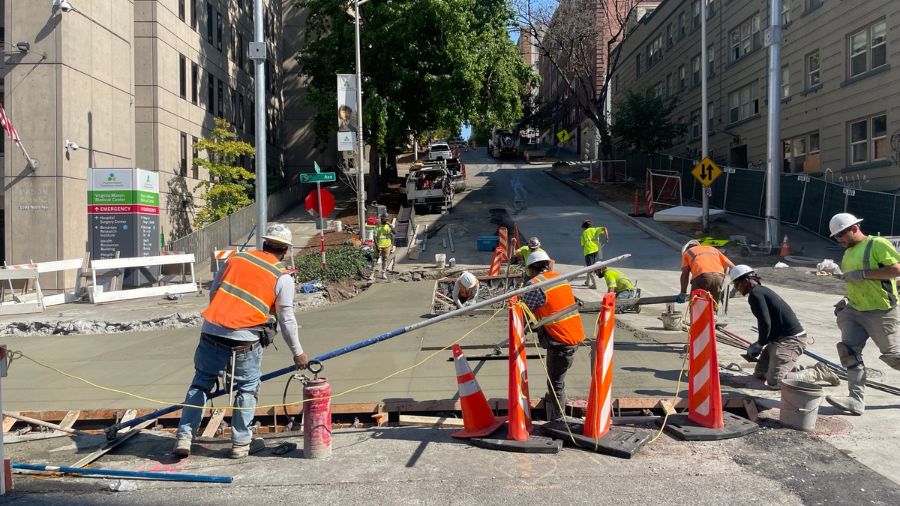Are flying cars the real future of personal travel in the Northwest?
Dec 2, 2021, 5:04 AM | Updated: 2:50 pm
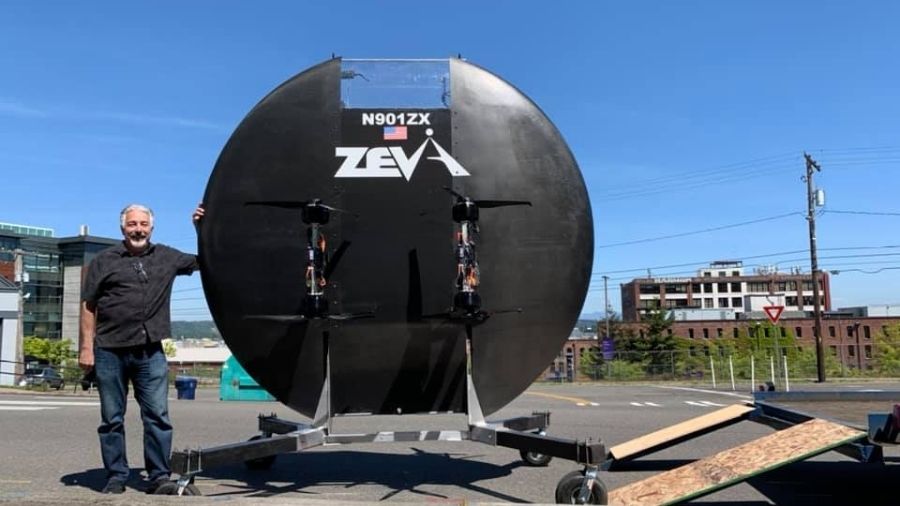
ZEVA founder and CEO Stephen Tibbetts stands next to a prototype of the personal air vehicle. (Photo courtesy of ZEVA/Facebook)
(Photo courtesy of ZEVA/Facebook)
Flying cars: Are they the real future of personal travel? A local engineer envisions a future of on-demand, electric, personal air vehicles carrying us to our destinations.
Engineer Steve Tibbitts bought a small plane in 2003 with the plan to explore the Northwest, using all the small runways dotted across the region.
“My dream was to be able to throw a folding mountain bike in the backseat and fly into the closest airport to my destination and just ride the last mile,” Tibbets told me. “What I found out is that all the little airports I knew about growing up had vanished.”
Tibbitts said nearly 300 small airports or runways between Seattle and Portland have just disappeared, and no one is going to be using prime real estate to put down new ones. That’s when his lightbulb ignited. He needed to build a small, personal plane that could take off and land vertically, something that he could land in his backyard or the nearest cul-de-sac.
Fast forward 18 years, and Tibbitts is now testing his prototype named Zeva. It has eight propellers and sits on its tail. The passenger gets into into the enclosed vehicle from behind, and punches in the destination.
“The thrust causes it to fly up vertically, and then within 20 or 30 seconds it’s developing enough speed where it will transition to forward flight, and then you’re flying through the air kind of like Superman,” Tibbitts said.
The Zeva is designed to go 50 miles on a single electrical charge, and fly at 160 miles an hour at an altitude of 1,000 to 2,000 thousand feet.
That’s what Zeva is designed to do, at least. So far, Tibbitts and his team have only done vertical take off and landing tests with the vehicle tethered to the ground, but he expects to get off the tether in a few weeks. Then will come transition testing, forward flight testing, adding a ballistic parachute, and finally passenger testing.
This isn’t happening tomorrow, but there is no doubt in Tibbitts’ mind that this is the future of personal travel.
“There’s always going to be healthy skepticism, but with or without Zeva, it’s going to happen,” he said.
The prototype got a lot of attention at the recent Dubai Air Show.
“I’m confident this is a real thing, and it’s happening,” Tibbitts said.
There more than 100 companies pursuing and designing these electric vertical take off and landing vehicles, but most are focusing on larger vehicles that would act more like air taxis.
Tibbitts envisions personal ownership — though he admits it might cost $250,000 to buy the first model — or fleets of private or publicly owned planes that you could hire on-demand, like ridesharing today.
“The utopia in my mind is to be able to walk to your vehicle, fly, and then walk to your destination so there’s no intermediate car access that is going to continue to clog up the highways,” he said.
Now I can hear you thinking: “Yeah, right, I can come up with 50 problems with this idea.”
And you’re not wrong. There really is no infrastructure for this today.
The first thing my wife asked me was, “Who will be flying these things?”
Let’s be honest with ourselves: We have enough trouble driving cars. Flying our own cars probably isn’t a good idea.
Tibbitts expects Zeva and other personal air vehicles will be autonomous, using systems currently being explored by the FAA and other agencies.
“There’s going to be a high degree of autonomy, and there’s going to be an autonomous, artificial intelligent air traffic management system in every region,” he said.
You tell the vehicle where you want to go, and the AI will direct the flight computer to the closest landing area to your destination.
Now, I also hear you scoffing, considering how well autonomous car testing is going, but Tibbitts said autonomy in the air is a lot easier than it is on the ground.
“Having a computer recognize the difference between a mailbox and a kid on a scooter is a really hard problem, whereas in the air, all you really need to do is recognize that there’s something there and fly around it to avoid it,” he said.
In addition to personal use, Tibbitts sees these vehicles being critical in natural disasters or emergencies.
Imagine if a paramedic could jump in one at the station, fly over all the traffic on I-5, and land on the freeway next to an accident. How much quicker could live-saving aid arrive?
Just think about the areas in Whatcom County that have been cut off by the recent flooding. You could fly in first responders or supplies with this type of vehicle, needing only a 30-foot circle to land in.
The one question I haven’t addressed yet is timing.
Tibbitts believes this will be reality by 2040. That’s about the same timing for getting light rail to Everett. Who are you betting on?
Check out more of Chris’ Chokepoints.


